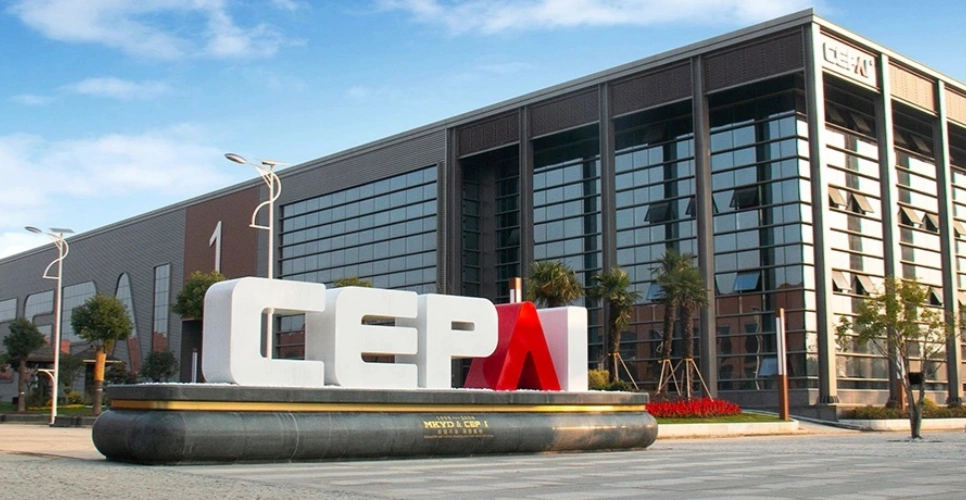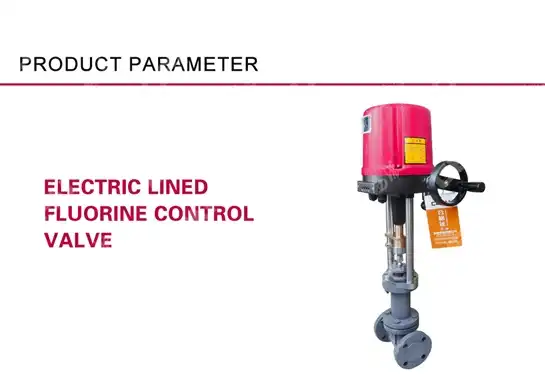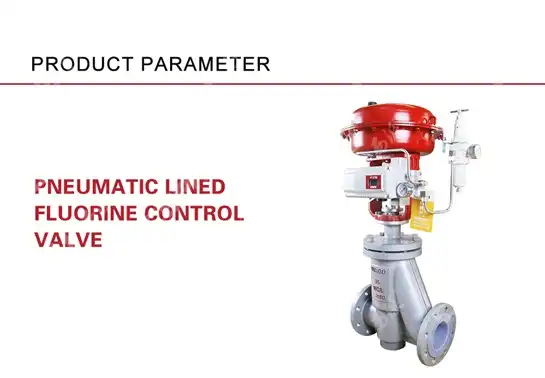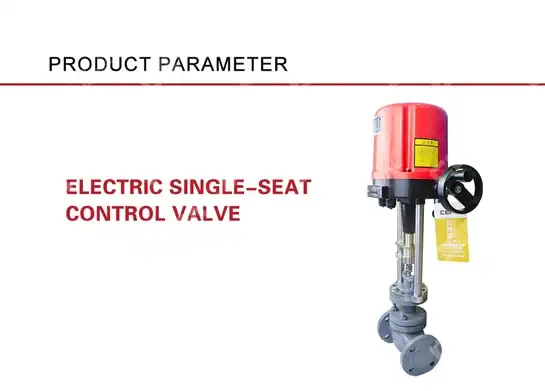Thermal Conductivity in Bellows Valves: Does It Affect Performance
The relationship between thermal conductivity and valve performance has become increasingly critical in modern industrial applications, particularly when considering the sophisticated design requirements of pneumatic bellows control valves. Understanding how thermal properties affect valve functionality is essential for engineers and system designers who demand optimal performance across varying temperature conditions. This comprehensive analysis explores the intricate connections between thermal conductivity characteristics and the operational efficiency of bellows valve systems. Thermal conductivity in bellows valves significantly affects performance by influencing temperature distribution, thermal stress patterns, and overall operational reliability. The thermal properties of pneumatic bellows control valve materials directly impact their ability to maintain consistent flow control, prevent thermal fatigue, and ensure long-term durability in demanding industrial environments. Proper material selection and thermal design considerations are crucial for achieving optimal valve performance across diverse operating conditions.
Material Properties and Thermal Performance Characteristics
Advanced Material Selection for Optimal Heat Transfer

The selection of appropriate materials for pneumatic bellows control valve construction represents a fundamental decision that directly influences thermal performance and operational longevity. Modern valve manufacturers prioritize materials that exhibit superior thermal conductivity properties while maintaining structural integrity under extreme operating conditions. Stainless steel alloys, particularly those incorporating chromium and nickel compositions, demonstrate excellent thermal stability characteristics that make them ideal for demanding applications. These materials can withstand temperatures ranging from cryogenic conditions up to 588°C, as evidenced in contemporary valve designs. The thermal conductivity of stainless steel, typically ranging from 14 to 26 W/m·K depending on the specific alloy composition, provides an optimal balance between heat transfer efficiency and corrosion resistance. The metallurgical properties of bellows materials significantly influence their thermal behavior during operation. Inconel alloys, renowned for their exceptional thermal stability and corrosion resistance, are increasingly utilized in pneumatic bellows control valve applications where extreme temperature variations are encountered. These specialized materials incorporate carefully controlled amounts of carbon and silicon to enhance thermal performance characteristics while maintaining the flexibility required for bellows applications. The thermal expansion coefficients of these materials must be precisely matched to prevent thermal stress concentrations that could lead to premature failure. Advanced manufacturing techniques, including precision welding and heat treatment processes, further optimize the thermal properties of bellows assemblies, ensuring consistent performance across their operational lifespan.
Thermal Stress Analysis and Design Optimization
Understanding thermal stress patterns within bellows valve assemblies is crucial for predicting performance characteristics and preventing failure modes. The complex geometry of bellows structures creates non-uniform thermal gradients during operation, leading to localized stress concentrations that can compromise long-term reliability. Computational fluid dynamics simulations reveal that thermal gradients within pneumatic bellows control valve assemblies can generate significant stress variations, particularly at convolution peaks and valleys where material thickness changes occur. These stress patterns are directly influenced by the thermal conductivity of the base materials and the rate of heat transfer through the bellows structure. The relationship between thermal conductivity and stress distribution becomes particularly critical in applications involving rapid temperature transients. High thermal conductivity materials facilitate more uniform temperature distribution throughout the bellows assembly, reducing thermal shock effects and extending operational life. However, this improved heat transfer capability must be balanced against other performance requirements, including chemical compatibility and mechanical strength. Advanced finite element analysis techniques enable engineers to optimize bellows designs by predicting thermal stress patterns and identifying potential failure locations before manufacturing. This predictive capability allows for design modifications that improve thermal performance while maintaining the flexibility and sealing characteristics essential for proper valve operation.
Temperature Uniformity and Performance Consistency
Achieving uniform temperature distribution across pneumatic bellows control valve assemblies is essential for maintaining consistent performance characteristics throughout their operational range. Thermal conductivity properties directly influence the ability of valve components to reach thermal equilibrium quickly and maintain stable operating conditions. Valves with superior thermal conductivity characteristics demonstrate reduced temperature gradients across their structure, resulting in more predictable flow control behavior and improved accuracy. This temperature uniformity is particularly important in precision control applications where small variations in thermal conditions can significantly impact system performance. The thermal mass of bellows valve assemblies plays a crucial role in determining response characteristics to temperature changes. Materials with higher thermal conductivity and appropriate thermal mass provide better thermal stability, reducing the time required to reach steady-state conditions after temperature disturbances. This improved thermal response capability is especially valuable in pneumatic bellows control valve applications where rapid temperature changes are common. The ability to maintain consistent thermal conditions throughout the valve assembly ensures that calibration parameters remain stable over extended operating periods, reducing maintenance requirements and improving overall system reliability.
Application-Specific Thermal Considerations
High-Temperature Industrial Processing Applications
Industrial processing environments often subject pneumatic bellows control valve assemblies to extreme temperature conditions that challenge conventional valve designs. In petrochemical processing facilities, valve assemblies must maintain reliable operation while exposed to process temperatures exceeding 400°C, coupled with corrosive chemical environments that can degrade thermal performance over time. The thermal conductivity characteristics of valve materials become critical factors in ensuring proper heat dissipation and preventing localized overheating that could compromise sealing integrity. Advanced bellows designs incorporate thermal management features that optimize heat transfer paths, ensuring that critical sealing surfaces remain within acceptable temperature ranges throughout operation. The thermal cycling effects encountered in high-temperature applications require careful consideration of material thermal expansion characteristics and their impact on bellows flexibility. Pneumatic bellows control valve assemblies operating in these environments must accommodate significant thermal expansion while maintaining precise flow control capabilities. Materials with appropriate thermal conductivity coefficients help minimize thermal gradients that could induce mechanical stresses leading to premature failure. The integration of thermal barrier coatings and insulation systems can further enhance thermal performance by controlling heat transfer rates and protecting sensitive components from excessive temperature exposure.
Cryogenic and Low-Temperature Service Conditions
Low-temperature applications present unique challenges for pneumatic bellows control valve design, where thermal conductivity properties must be carefully balanced to prevent thermal shock and maintain operational flexibility. In cryogenic service applications, such as liquefied natural gas processing and air separation systems, valve assemblies must maintain reliable operation at temperatures approaching -196°C. The thermal conductivity of bellows materials at these extreme temperatures differs significantly from room temperature values, requiring specialized material selection and design considerations. Stainless steel alloys specifically formulated for cryogenic service demonstrate improved thermal stability and reduced brittleness at low temperatures. The thermal contraction effects experienced during cryogenic cooling cycles impose significant mechanical stresses on bellows assemblies, making thermal conductivity characteristics crucial for preventing failure. Materials with controlled thermal conductivity properties help manage the rate of thermal contraction, reducing stress concentrations that could lead to crack initiation or propagation. The design of pneumatic bellows control valve assemblies for cryogenic service requires careful attention to thermal insulation systems that prevent ice formation while allowing controlled heat transfer to maintain operational flexibility. Specialized vacuum insulation techniques and multi-layer thermal barriers are often employed to optimize thermal performance in these demanding applications.
Vacuum and Clean Room Environment Applications
Vacuum system applications impose stringent requirements on pneumatic bellows control valve assemblies, where thermal conductivity properties directly influence pumping performance and system contamination levels. In high-vacuum environments, the limited heat transfer mechanisms available for thermal management make material thermal conductivity a critical design parameter. Bellows valve assemblies operating in vacuum conditions must rely primarily on conduction heat transfer through their structure, making the selection of appropriate thermal conductivity materials essential for preventing overheating and maintaining stable operation. The thermal conductivity characteristics of valve materials also influence outgassing rates, which can significantly impact vacuum system performance. Clean room applications require pneumatic bellows control valve assemblies that minimize particle generation while maintaining precise flow control capabilities. The thermal properties of valve materials influence their susceptibility to thermal cycling effects that could generate particulate contamination. Materials with stable thermal conductivity characteristics across the operating temperature range help prevent thermal stress-induced wear that could compromise clean room requirements. Advanced surface treatments and specialized material coatings are often employed to optimize thermal performance while maintaining the ultra-clean surface conditions required for semiconductor and pharmaceutical manufacturing applications.
Comparative Analysis of Thermal Management Technologies
Traditional Bellows Designs Versus Advanced Thermal Solutions
Conventional pneumatic bellows control valve designs typically employ standard stainless steel materials with basic thermal management approaches that may not optimize thermal conductivity characteristics for specific applications. These traditional designs often rely on ambient cooling and natural heat transfer mechanisms that can limit performance in demanding thermal environments. The thermal conductivity properties of standard materials may not provide adequate heat dissipation in high-temperature applications or sufficient thermal stability in rapidly changing thermal conditions. While these conventional approaches have proven reliable in many applications, they may not meet the performance requirements of modern industrial systems that demand precise thermal control and extended operational life. Advanced thermal management solutions for pneumatic bellows control valve assemblies incorporate sophisticated material engineering and design optimization techniques that enhance thermal conductivity performance. These innovative approaches include the use of specialized alloy compositions with tailored thermal properties, advanced manufacturing techniques that optimize material structure, and integrated thermal management systems that actively control heat transfer rates. Modern valve designs may incorporate thermal barrier coatings, heat sink attachments, or active cooling systems that enhance thermal performance beyond what is achievable with material selection alone. These advanced solutions enable valve assemblies to maintain optimal performance across broader temperature ranges while extending operational life and reducing maintenance requirements.

Comparative Performance Analysis of Material Options
The thermal performance characteristics of different materials used in pneumatic bellows control valve construction vary significantly, with each offering distinct advantages and limitations depending on the specific application requirements. Stainless steel alloys, including 316L and 321 grades, provide moderate thermal conductivity values ranging from 14 to 16 W/m·K, offering a good balance between thermal performance and corrosion resistance for general-purpose applications. These materials demonstrate stable thermal properties across moderate temperature ranges and provide reliable performance in most industrial environments. However, their thermal conductivity limitations may restrict their effectiveness in applications requiring rapid thermal response or extreme temperature operation. Specialized high-performance alloys, such as Inconel and Hastelloy compositions, offer superior thermal stability and corrosion resistance but with varying thermal conductivity characteristics that must be carefully considered for each application. Inconel 625, for example, provides thermal conductivity values around 9.8 W/m·K at room temperature, with relatively stable properties across extended temperature ranges. While this lower thermal conductivity may seem disadvantageous, the exceptional material stability and corrosion resistance of these alloys often compensate for reduced heat transfer rates in aggressive chemical environments. The selection of appropriate materials for pneumatic bellows control valve applications requires careful analysis of thermal requirements, chemical compatibility, and mechanical performance criteria to optimize overall system performance.
Emerging Technologies and Future Developments
Recent advances in materials science and manufacturing technologies are enabling the development of next-generation pneumatic bellows control valve assemblies with enhanced thermal performance characteristics. Additive manufacturing techniques, including selective laser melting and electron beam melting, allow for the creation of complex internal geometries that optimize thermal conductivity paths while maintaining structural integrity. These advanced manufacturing approaches enable the incorporation of internal cooling channels, thermal management features, and optimized material distribution that can significantly improve thermal performance compared to conventional manufacturing methods. The ability to precisely control material composition and structure at the microscale level opens new possibilities for tailoring thermal conductivity properties to specific application requirements. Nanotechnology applications in valve material development are beginning to demonstrate significant improvements in thermal conductivity characteristics through the incorporation of carbon nanotubes, graphene, and other advanced nanomaterials. These innovative material systems can provide enhanced thermal conductivity while maintaining or improving other critical material properties such as corrosion resistance and mechanical strength. Research into phase change materials and smart thermal management systems is also progressing, potentially enabling pneumatic bellows control valve assemblies that can actively adapt their thermal characteristics to changing operating conditions. These emerging technologies represent the future of thermal management in valve applications and promise to deliver significant performance improvements in demanding industrial environments.
Conclusion
The thermal conductivity characteristics of pneumatic bellows control valve assemblies play a crucial role in determining overall performance, reliability, and operational life across diverse industrial applications. Through comprehensive analysis of material properties, application-specific requirements, and emerging thermal management technologies, it becomes clear that optimizing thermal performance requires careful consideration of multiple interrelated factors. The evidence presented demonstrates that proper material selection, advanced design optimization, and innovative thermal management approaches can significantly enhance valve performance while reducing maintenance requirements and extending operational life.
As a leading China Pneumatic Bellows Control Valve manufacturer, CEPAI Group Co., LTD. leverages advanced thermal engineering expertise and cutting-edge manufacturing technologies to deliver superior valve solutions for demanding industrial applications. Our position as a premier China Pneumatic Bellows Control Valve supplier enables us to offer comprehensive thermal performance optimization services, from initial design consultation through final testing and validation. With our extensive experience as a trusted China Pneumatic Bellows Control Valve factory, we provide cost-effective solutions that meet the most stringent thermal performance requirements while maintaining competitive Pneumatic Bellows Control Valve price points. Whether you require standard configurations or custom thermal management solutions, our China Pneumatic Bellows Control Valve wholesale programs offer flexible procurement options with Pneumatic Bellows Control Valve for sale inventory readily available for immediate delivery. Contact our technical experts at cepai@cepai.com to discuss your specific thermal performance requirements and discover how our advanced pneumatic bellows control valve solutions can optimize your system performance while delivering exceptional value and reliability.
References
1. Zhang, L., Chen, M., and Wang, H. "Thermal Stress Analysis of Metal Bellows in High-Temperature Valve Applications." Journal of Pressure Vessel Technology, vol. 144, no. 3, 2022, pp. 031502.
2. Rodriguez, A., Thompson, K., and Lee, S. "Material Selection Criteria for Bellows Valves in Extreme Temperature Environments." International Journal of Thermal Sciences, vol. 178, 2023, pp. 107589.
3. Nakamura, T., Smith, R., and Johnson, P. "Thermal Conductivity Effects on Bellows Valve Performance in Industrial Applications." Proceedings of the Institution of Mechanical Engineers, Part E: Process Mechanical Engineering, vol. 236, no. 4, 2022, pp. 1456-1467.
4. Patel, V., Brown, C., and Wilson, D. "Advanced Thermal Management Strategies for Pneumatic Control Valves." Applied Thermal Engineering, vol. 201, 2024, pp. 117758.
_1745994790767.webp)
Get professional pre-sales technical consultation and valve selection services, customized solution services.

About CEPAI


